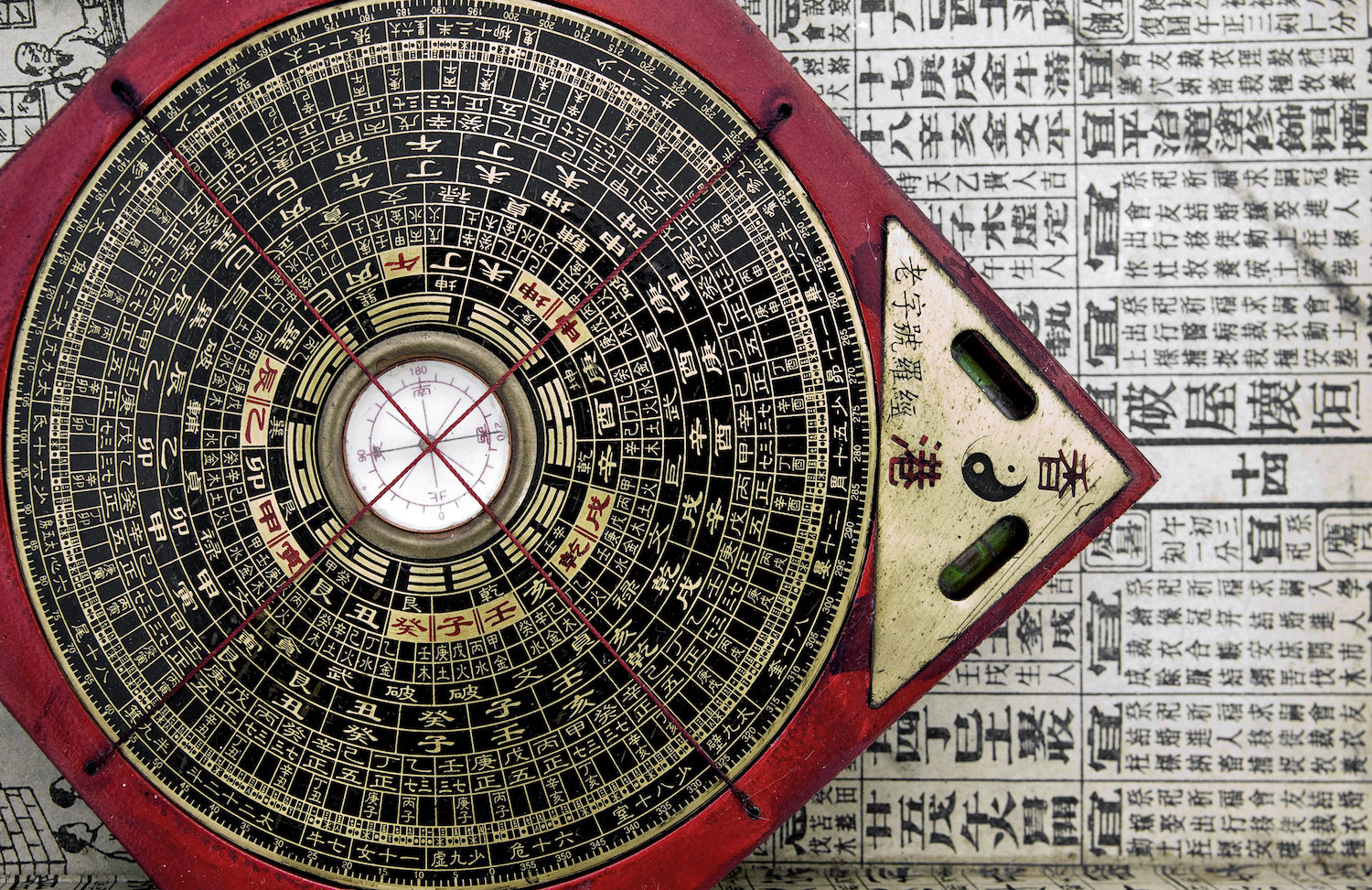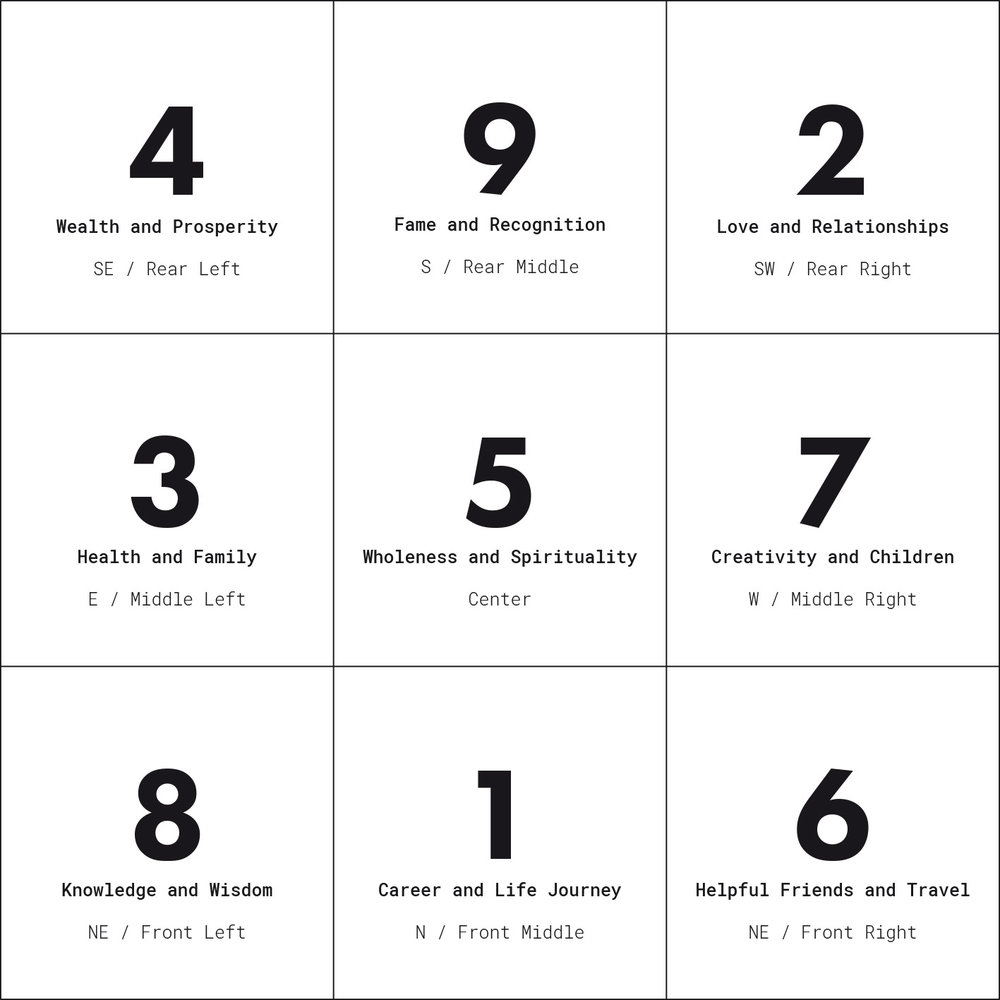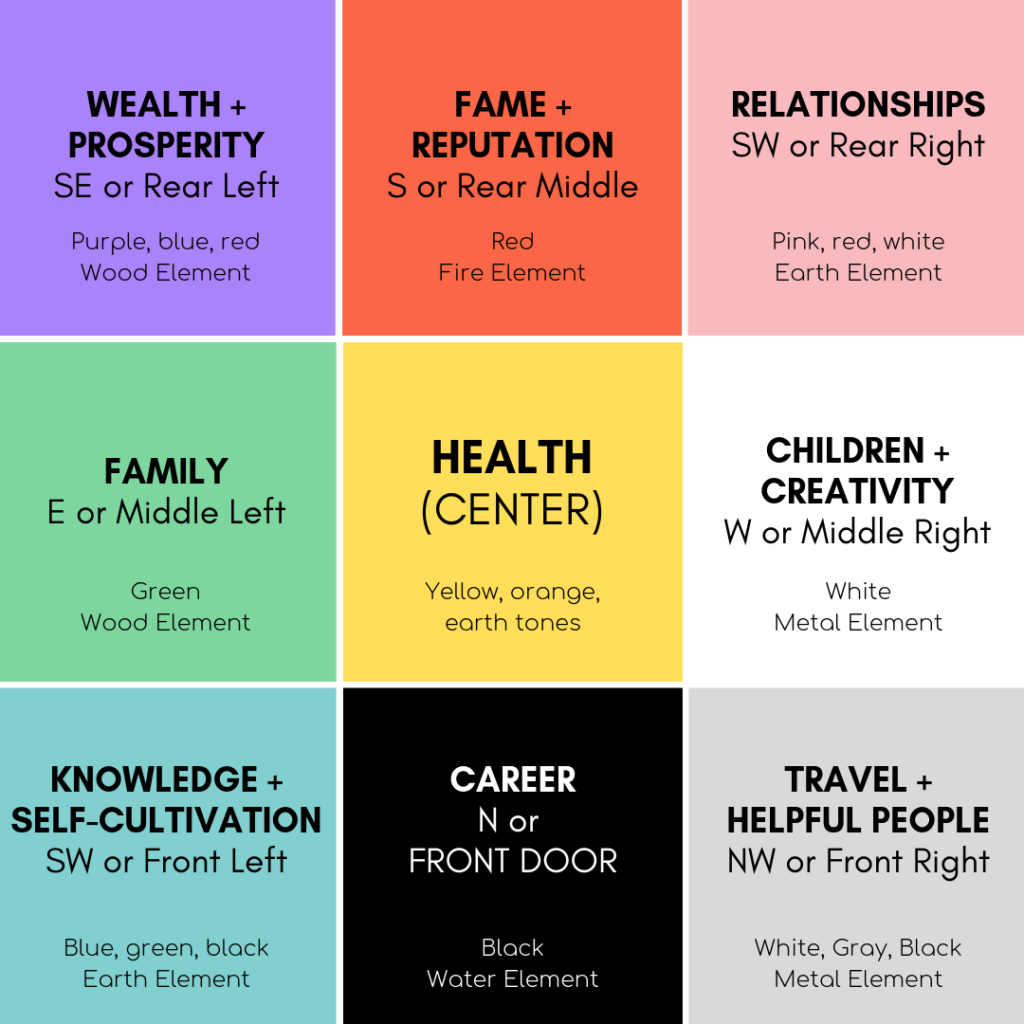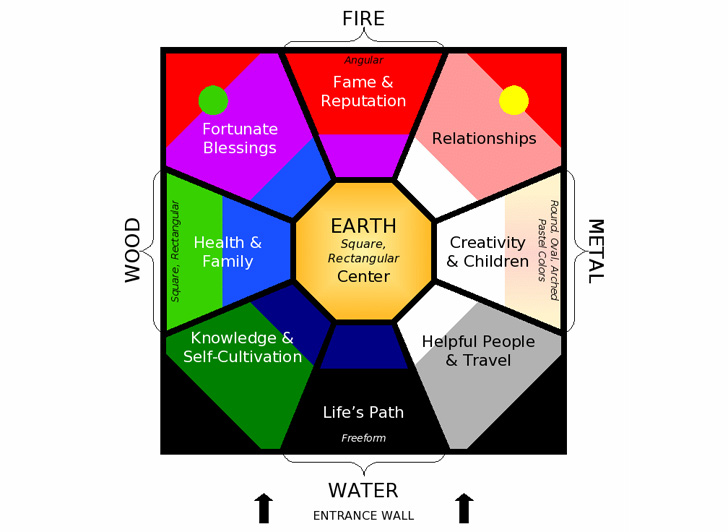Feng Shui





What is it?
Feng Shui is an ancient Chinese practice that uses the concept of energy forces to harmonize individuals with their surrounding environment. The Feng Shui Society defines Feng Shui as “the art and science of designing harmonious environments based on the profound Chinese understanding of how people are connected to and affected by their close surroundings.”
In Feng Shui, energy is called “Chi”. Correcting the movement of Chi is called a “cure”. The goal of the many Feng Shui cures is to move energy, or Chi, through a space. Rodika Tchi, a Master Feng Shui consultant states that Feng Shui is “first and foremost, energy work”. She describes Feng Shui as the acupuncture of the space as it opens up powerful energy channels in the home to help it (and you) get stronger and more harmonious.
Feng Shui literally means “wind and water” and comes from an ancient poem that emphasized harmony with nature. A simple way to think about how Feng Shui works with Chi is as if it were a breeze. The goal of Feng Shui is to ensure that the breeze is harmoniously flowing through the space, benefiting the person in it.
Core philosophy
Feng Shui has its roots in Taoism and its belief that Chi (life force) is in everything, including all inanimate objects in nature. Feng Shui has also a pretty close relationship to astrology, as depicted later on with the concept of baguas. Chi can be positive, bringing strength and prosperity or negative, bringing misfortune. Fent Shui attempts to arrange a physical space and its objects in such a way that promotes a steady flow of positive Chi.
Principle #1: Polarity
In Feng Shui, polarity is represented by yin and yang. Like two magnetic poles, in the yin and yang, one side receives force while the other side exerts it. These forces are, in fact, interconnected and highly interdependent. One cannot exist without the other.
In Feng Shui, the aim is to balance opposing forces (also called elements) within a city, building, room, site, or object. As seen below, the elements have their own characteristics and interdependencies.
Principle #2: Wu Xing (the five elements)
The concept of elements also piggybacks on the principle of yin and yang as they all exhibit specific traits and interdependencies between one another. In Feng Shui, the goal is to balance these elements in a space to promote positive energy, balance and harmony in life. Each element has associated qualities, shapes, colors, seasons, areas of life and interactions.
Wood
- Qualities: Vitality, expansive and upward
- Shapes: Rectangular or columnar
- Colors: Blues and greens
- Season: Spring
- Areas: Wealth and family
- Interactions: Feeds fire
Fire
- Qualities: Brilliant, illuminating and passion
- Shapes: Pointy or triangular
- Colors: Red
- Season: Summer
- Areas: Fame
- Interactions: Produces earth
Earth
- Qualities: Stable, grounded and self-caring
- Shapes: Square or flat
- Colors: Brown, yellow and orange
- Season: Transitions between seasons
- Areas: Partnerships, knowledge, and health
- Interactions: Bears metal
Water
- Qualities: Shifting, flowing and downward
- Shapes: Curvy and wavy
- Colors: Black
- Season: Winter
- Areas: Career
- Interactions: Nourishes wood
Metal
- Qualities: Precise, beautiful and efficient
- Shapes: Spherical or circular
- Colors: White and metallics
- Season: Autumn
- Areas: Children and helpful people
- Interactions: Collects water
The goal in Fent Shui is to balance these elements and/or accentuate some elements in areas that need help in your life.
Principle #3: Bagua
Boxes are the basic building blocks of Feng Shui as they help form the Feng Shui roadmap, called the Bagua.
Historically, the Bagua traces back to the Han Dynasty (206 B.C. – A.D. 220) with the “Book of Changes”, which mentions the Lo Shu Square (three-by-three grid). The numbers in the square add up to 15 vertically, horizontally and diagonally. It is interesting to note that the 15 is the number of days in the lunar cycle, hence its connection to Chinese astrology.
The square, later on, evolved to the bagua grid, which includes the elements. There are still relations between the numbers and the elements, but depending on the user, there can be a variety of related material associated with a square.
The bagua grid evolves into the bagua map, also known as “pah kwa” or trigram. Practitioners who use the bagua map will overlay the diagram on a room or house to determine what should be placed in each area, aligning the bottom of the chart with the entrance wall.
The following would promote each area:
- Black (career): Mirrors, fountains
- Blue (skills and wisdom): Books, computers
- Green (family): Plants, family photos
- Purple (prosperity): Sailing ships and related materials, healthy plants
- Red (fame and reputation): Awards, animal-related items
- Pink (love and relationships): Paired items, pictures of loved ones
- White (creativity and children): Artwork, children’s photos
- Gray (helpful people, travel): Religious items, travel souvenirs
- Yellow (health): Pottery, stone objects
Principle #4: Commanding position
The commanding position is where you want to spend most of your time when you are in that room. Feng Shui guidelines suggest that the commanding position is the spot in a room that is the furthest from the door and not in direct line with it.
The basic requirements of a strong commanding position are:
- Point furthest from the door
- Not directly opposite of the door
- Offers a clear view of the door
- Has strong support or backing behind you
History
The true beginning of Feng Shui is still unknown. Some believe it originated more than 2,000 years ago in Southwestern China, while others believe it is older than 6,000 years.
Ancient Feng Shui
Some Feng Shui masters believe Feng Shui is as old if not older than the I Ching. Scientific and archeological research has uncovered artifacts that substantiate this belief. Feng Shui symbols have been found on artifacts at various excavation sites that can be dated to the earlier period.
In fact, the earliest artifacts were found in 1988 during the excavation of a grave that dated back to approximately 4,000 B.C. It surprised archeologists with Dragon and Tiger constellations created with mosaics and the Feng Shui symbols for heaven (round) and earth (square).
Further archeological projects discovered that Feng Shui was used to determine burial sites. Ernest Eitel wrote that the Chow dynasty (B.C. 1122) used this with the belief that the locations of the grave protected the chi of the deceased and gave support to their decedents.
Early Feng Shui uses
The earliest known records relating to the art and science of Feng Shui date to the Han Dynasty between the years 200 BC to 200 AD. During this time, Feng Shui was used to find the perfect spot for homes, villages and graves.
Later on, during the Tang Dynasty (618 to 906 AD), the principles of Feng Shui came together in what we know as Form School or Landscape School. The purpose of this basic form of Feng Shui was to locate places in the landscape that had auspicious chi to keep the people protected. Some key findings of this era include:
- The examination of chi energy. The land surrounding homes was anayzed to determine energies.
- Trees, rivers, lakes, mountains, valleys and hills became factors to determine the appropriate home or building site.
- Poison arrows became important points of consideration.
The Song Dynasty was the era that saw the birth of the Compass School Feng Shui (credited to Yahn Yun Sung). The Feng Shui principles in this evolution of the practice are the basis of much of the Compass School as it is known and studied today. Some aspects include:
- The development of a more scientific approach to Feng Shui, compared to the practical approach of the Form School.
- The addition of elements, such as compass, mathematics, numerology and I-Ching.
- The development of trigrams (Ba Gua), to analyze the energy of a given space.
Modern times
Feng Shui continued to be popular throughout the Ming and Ching Dynasties (1368 to 1911). However, when the Ching Dynasty fell, the ensuing Chinese government discouraged the practice of Feng Shui. Even though the communist government seized control in 1949, many Feng Shui practitioners continued to practice their art.
As Feng Shui found its way to the western world, it became very popular over time. The practice has spread globally, with millions of people applying it or following it. The practices between the East and West somewhat vary. The Western methodology is known as Black Hat Tantric Buddhism Feng Shui (BTB) and it became popular in the 1970s. While BTB embraces basic Feng Shui rules and the use of bagua, it omits some mathematical formulas and practices that “purist” Feng Shui practitioners from the East still believe in. Nevertheless, different variations of Feng Shui continue to captivate people throughout the world.
Benefits and uses
Feng Shui is primarily used in architecture and design. The underlying goal is to create energy harmony between a space and its inhabitants. The main benefits of Feng Shui include:
It promotes healthy circulation of energy in your home
The proper use of elements, colors and general principles of Feng Shui can make a significant difference in how the energy flows. The placement of elements, along with the placement of furniture, electronics, and even plants are the variables that come into play when applying Feng Shui in our homes.
As Feng Shui is inspired by nature, the effective application of its principles can help transform your home into a similarly harmonious setting. While measuring how energy flows in a home is a difficult task, many homes that are designed with Feng Shui principles in mind feel light, airy and welcoming.
It enhances your own energy
The effective design and layout of the spaces you live in can have a significant impact on your own energy. You can optimize areas of your home to boost areas where you are deficient. For example, the fire element, when balanced correctly can bring vitality and passion to your life. Or you can focus on balancing the water element, which brings calm and relaxation.
When you customize your home to cater to your own needs, you also create a sense of resonance with the decor. This helps you connect with your own space and make it yours, elevating the vibration of the home and its owner.
It helps mitigate stress
Creating an environmental sanctuary for the body to rest, relax and restore allows the limbic system to reset and the nervous system to become balanced. You will find yourself a little more relaxed, maybe even more balance. A little happier, perhaps.
Using Feng Shui for stress alleviation works on two levels. First, Feng Shui helps you relax, the main antidote to stress. Second, and not as well known, is that when you incorporate Feng Shui principles into your home, it helps you feel in control of your environment, another powerful antidote to stress.
It can help manifest your intentions
Many energy healers or practitioners say that manifestation is a function of frequency. When you achieve your highest frequency, good things start to happen naturally. Conversely, when you tune into lower frequencies, it can be more challenging.
Feng Shui is one of the various energy tools that you can have in your toolkit to help you elevate your energetic vibration. It can help your place or your office be places that will make it easier, not more difficult, to reach higher frequencies.
Who practices it
Anyone can claim to be a Feng Shui “consultant” or “master” as there is no central governing body for the Feng Shui discipline. There are, however, plenty of choices to study the principles of Feng Shui. The International Feng Shui Guild’s listing is a great resource to find training programs. It presents the approach used by every school and the biographies of the key teachers.
When working with a Feng Shui consultant, we encourage you to:
Research options
The best place to start your search for a practitioner is through referrals. This is a great opportunity to get firsthand information to assess the working relationship between the consultants and clients.
Aside from referrals, many Feng Shui consultants are members of professional organizations. As a matter of fact, for Feng Shui consultants, you can search the International Feng Shui Consultant Guild. It provides an easy-to-use tool to find local practitioners. You can also check with local or regional Feng Shui professional organizations. Shopping into a Feng Shui store may also yield local recommendations from the staff and customers.
Do your homework
You should research the topic of Feng Shui first, which will help you have a more meaningful conversation when evaluating the expertise. When contacting consultant options, you should inquire about the type of Feng Shui they practice, the type of clients they work with, the scope of the service, fee structure, references, etc.
Know the difference between consultants and masters
Both consultants and masters focus on the same goal but how they gained their knowledge is what distinguishes them. Traditionally masters go through extensive training and years of practice and apprenticeship with another master. Generally, they study for longer periods of time than consultants.
However, today there are many programs that train individuals to be a consultant or a master and some even use the term interchangeably. Regardless of credentials, it is very important to do the research and interviews to find someone who can work for you.
Analyze your needs
Some Feng Shui concepts and cures can be a do-it-yourself project. However, there could be many benefits to having a master or consultant if you are dealing with renovations, floor plans or more complex needs.
Nowadays Feng Shui practitioners incorporate interior design training, making the offering all the more appealing. Likewise, many interior designers incorporate concepts from Feng Shui in their own practices.
What to expect
While the format of the consultation with Feng Shui consultants may vary slightly, they tend to share some common steps:
- Overview of Feng Shui and how it can help you: during this process, the consultant will give you a brief overview of how Feng Shui can help you. They will provide examples of problems that have helped other clients address and will give you an opportunity to think of your own goals (if you haven’t already!)
- Goal setting: this is the time to go deeper into the issues or areas of your life you want to improve. The consultant may ask deeper questions to help identify some problem areas in your environment.
- Chi walk: this is where the consultant “tours” your home, going into each space and assessing the Chi – or energy – and how it flows throughout your home. It’s not only examining your space but how you live. It may feel a little more personal, but that’s because so is Feng Shui.
- Working with the bagua: if you have floor plans for your home or space, it is highly suggested you have them available. This helps the consultant give a more accurate reading. Otherwise, the consultant will sketch up a rough floor plan of your current conditions with the bagua map overlaid. This is where the consultant discusses your goals by looking at the different sectors of your home.
- Cures: the consultant will provide a list of suggestions to implement in your space to either enhance or reduce the energy, depending on your specific situation. It is important that there are multiple ways of addressing problem areas, so if you don’t want to paint your wall red, you have some other choices to enhance the energy instead.
Interesting facts
Despite its popularity and longevity, Feng Shui is a very low-key discipline. Here are some facts about Feng Shui that you may now know about:
- Since the mid-20th century, China had made it illegal for citizens to practice Feng Shui. One reason was that Emperor Mao Zedong, knowing the immense power that Feng Shui had, didn’t want the commoners to have any advantage over the government.
- Feng Shui is very popular not only among celebrities but also big corporations and organizations. Examples are the United Nations, Wall Street Journal and Dreamworks. Disney even redesigned Hong Kong Disneyland by moving gates 12 degrees and realigning walkways because of Feng Shui.
- Purifying the air by the act of space clearing is an essential part of Feng Shui. Studies reveal that the burning of medical plants like sage or palo santo is the most antiseptic practice.
- Decluttering is a key to balance and harmony. According to US News and World Reports, the average person spends one year of their life looking for something they misplaced. Feng Shui also states that clutter in the bathroom can cause lack of sleep and intimacy, clutter in the kitchen is sign of not nourishing our bodies, while a cluttered closet can cause weight gain.
- Electromagnetic fields are taken into account in Feng Shui. Consultants also check the electromagnetic fields in the building. Exposure to EMF’s can be dangerous and is linked to insomnia, headaches, stress, cancer and other problems.
Closing statement
The ultimate goal of the use of Feng Shui in planning is the protection and support of the people who live in a community. Feng Shui provides the base of knowledge to enable deliberate planning with the intention of providing this support.
The result will be a high quality of life, greater balance and harmony in all aspects of life, a stronger sense of community, and a greater connection to each other and to the rest of the world.
Newsletter
Sign up for emails to get the scoop on our latest articles, new developments and more.

